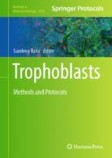Search
Search Results
-
In Situ Imaging of Proteins Using DNA-PAINT Super-Resolution Microscopy
The spatial resolution of conventional light microscopy is restricted by the diffraction limit to hundreds of nanometers. Super-resolution microscopy...
-
Imaging Cell Signaling in Tissues Using the IBEX Method
The study of cell signaling within tissues can be enhanced using highly multiplexed immunohistochemistry to localize the presence and spatial...
-
Deep Learning-Based Cell Tracking in Deforming Organs and Moving Animals
Cell tracking is an essential step in extracting cellular signals from moving cells, which is vital for understanding the mechanisms underlying...
-
Three-Dimensional Imaging of Macrophages in Complete Organs
The introduction of the light-sheet microscope has facilitated the analysis of complete tissues for the presence of all cells and their location in...
-
Studying Autophagy in Microglia: Overcoming the Obstacles
In this chapter, we provide an overview of the main techniques and experimental approaches that can be used to analyze autophagy flux in microglia,...
-
Fate-Map** of Yolk Sac-Derived Macrophages
To better understand the distinct functions of yolk-sac-derived tissue-resident macrophagesTissue resident macrophages (TRMsTissue-resident...
-
Visualization of a Cell Wall Hydrolase Inhibitor in Fusobacterium nucleatum by Immunofluorescence Microscopy
Innately present in tears, saliva and mucosal secretions, lysozyme provides a critical defensive strategy to the host by cleaving the...
-
Precision-Cut Slice Culture Method for Rat Placenta
Organotypic slice cultures provide several advantages over primary and cell line culture models. Unlike monolayer cultures, organotypic slice...
-
Three-Dimensional In Vitro Human Placental Organoids from Mononuclear Villous Trophoblasts or Trophoblast Stem Cells to Understand Trophoblast Dysfunction in Fetal Growth Restriction
The placentaPlacenta plays a critical role in the efficient delivery of nutrients and oxygen from mother to fetus to maintain normal fetal growth....
-
In Vivo Quantitative Assessment of Gestational Choriocarcinoma Development and Progression Using Luminescent Trophoblast Cells
Gestational trophoblastic diseases (GTD) are a group of pregnancy-related disorders representing rare human tumors. Among GTD is the gestational...
-
Airway Cells 3D Reconstruction via Manual and Machine-Learning Aided Segmentation of Volume EM Datasets
Volume electron microscopy (vEM) is a high-resolution imaging technique capable of revealing the 3D structure of cells, tissues, and model organisms....
-
Echocardiography to Assess Cardiac Structure and Function in Genetic Cardiomyopathies
Rodents are the most common experimental models used in cardiovascular research including studies of genetic cardiomyopathies. Genetic...
-
Artificial Modulation and Rewiring of Cell Cycle Progression Using Synthetic Circuits in Fission Yeast
Cell cycle control is a central aspect of the biology of proliferating eukaryotic cells. However, progression through the cell cycle relies on a...
-
Establishing a Pregnancy Lyme Disease Biobank
Availability of relevant biological samples supports both basic science research and patient-centered clinical studies. Establishing a biorepository...
-
Applying BERT and ChatGPT for Sentiment Analysis of Lyme Disease in Scientific Literature
This chapter presents a practical guide for conducting sentiment analysisSentiment analysis using Natural Language ProcessingProcessing (NLP)...
-
Develo** a Prospective Gestational Lyme Disease Study
Lyme disease in pregnancy is understudied. The few available reports of Borrelia infection during pregnancy collecting clinical outcomes, with or...
-
CYTOSPOT: Intracellular Staining and Detection of Cytokines by Flow Cytometer, an Alternative to LYMESPOT
Intracellular cytokine staining is a versatile technique used to analyze cytokine production in individual cells by flow cytometry. This methodology...
-
Amniotic Membrane and Amniotic Epithelial Cell Culture
Amniotic membrane (AM) is considered an important medical device for applications in regenerative medicine. The therapeutic properties of AM are due...
-
Renal Organoids from Whole Kidney Cells
Organoid technology, as a three-dimensional (3D) culture method, provides a feasible tool to self-organize multiple types of organ-specific cells,...
-
Organotypic 3D Cell Culture of the Embryonic Lacrimal Gland
Ectodermal organ development, including lacrimal gland, is characterized by an interaction between an epithelium and a mesenchyme. Murine lacrimal...
